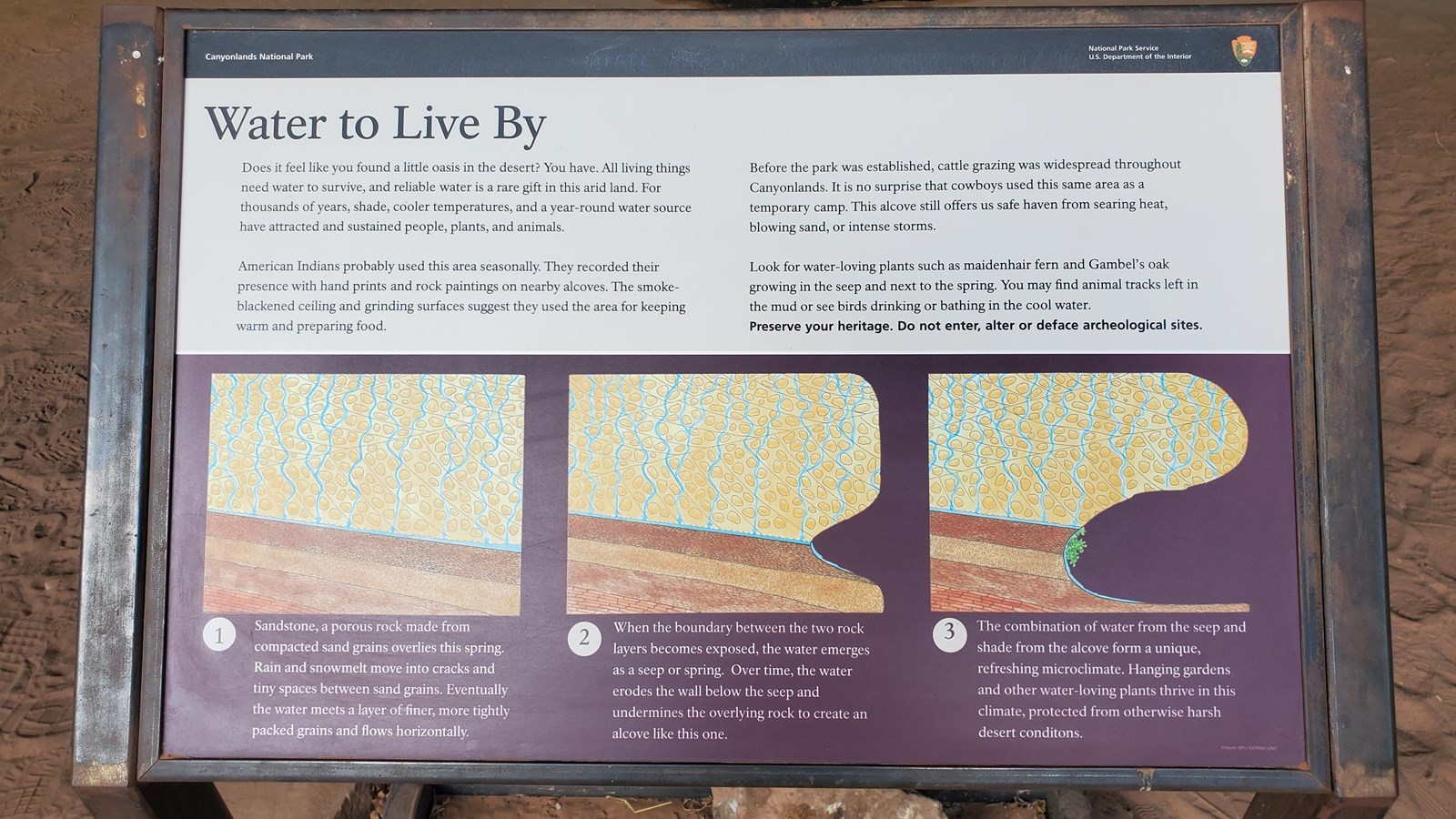Last updated: September 17, 2024
Place
Cave Spring: Water to Live By

NPS/Isabel Gonzalez
Historical/Interpretive Information/Exhibits
Does it feel like you found a little oasis in the desert? You have. All living things need water to survive, and reliable water is a rare gift in this arid land. For thousands of years, shade, cooler temperatures, and a year-round water source have attracted and sustained people, plants, and animals.
American Indians probably used this area seasonally. They recorded their presence with hand prints and rock paintings on nearby alcoves. The smoke-blackened ceiling and grinding surfaces suggest they used the area for keeping warm and preparing food.
Before the park was established, cattle grazing was widespread throughout Canyonlands. It is no surprise that cowboys used this same area as a temporary camp. This alcove still offers us safe haven from searing heat, blowing sand, or intense storms.
Look for water-loving plants such as maidenhair fern and Gambel's oak growing in the seep and next to the spring. You may find animal tracks left in the mud or see birds drinking or bathing in the cool water.
Preserve your heritage. Do not enter, alter, or deface archaeological sites.
Below the text are three diagrams that are labled one, two, and three respectively. Each image is accompanied by text.
- Sandstone, a porous rock made form compacted sand grains overlies this spring. Rain and snowmelt move into cracks and tiny spaces between sand grains. Eventually the water meets a layer of finer, more tightly packed grains and flows horizontally.
- When the boundary between the two rock layers becomes exposed, the water emerges as a seep or spring. Over time, the water erodes the wall below the seep and undermines the overlaying rock to create an alcove like this one.
- The combination of water from the seep and shade from the alcove form a unique, refreshing microclimate. Hanging gardens and other water-loving plants thrive in this climate, protected from otherwise harsh desert conditions.
